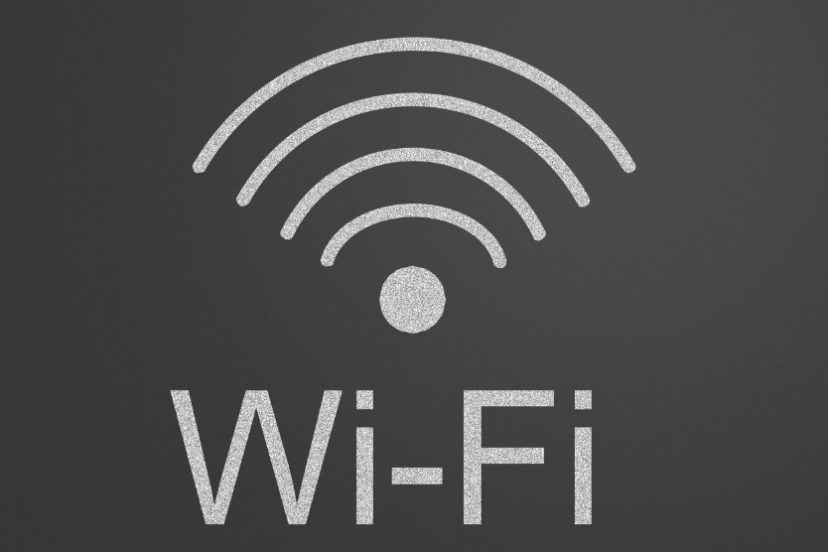Working from home has become the new normal for millions of people worldwide. While the convenience…
10 Frequently Asked Questions About EMF Radiation

Electromagnetic field (EMF) radiation is a topic that continues to pique curiosity and raise questions as our reliance on electronic devices grows.
From cell phones and Wi-Fi routers to household appliances, EMFs are an invisible part of our daily lives that many people are eager to understand better.
What exactly are EMFs, and should we be concerned about their presence?
Whether you’re looking to protect your health, reduce exposure, or simply deepen your knowledge, gaining clarity on this complex subject is essential.
Read on to uncover clear answers to the most common questions about EMF radiation and how it could impact you and your loved ones.
1)) What Is EMF Radiation?
Electromagnetic fields (EMF) are invisible areas of energy produced by electrically charged objects.
They occur both naturally, such as from sunlight and the Earth’s magnetic field, and through human-made sources like power lines, cell phones, Wi-Fi routers, and other electronic devices.
These fields are composed of both electric and magnetic components, which can vary in strength and frequency.
EMF radiation exists along a spectrum ranging from low-frequency fields, commonly associated with electricity and household appliances, to high-frequency fields, such as those emitted by X-rays and gamma rays.
Understanding EMF radiation involves recognizing its ubiquity in modern life and its connection to the expanding use of technology that relies on electromagnetic energy.
2)) Sources Of EMF Radiation?
Electromagnetic fields (EMF) originate from a wide variety of natural and human-made sources that are all around us.
Naturally, EMFs are generated by occurrences such as the Earth’s magnetic field, lightning strikes, and solar activity, providing background radiation that has existed for millennia.
However, the last century has seen a significant rise in artificial sources due to advances in technology and the increasing reliance on electronic devices.
Power lines, household wiring, and electrical appliances are common low-frequency sources, while more advanced technologies like cell phones, Wi-Fi routers, and communication satellites emit higher-frequency fields.
Industrial and medical equipment, such as radar systems and MRI machines, also contribute to the presence of EMFs.
This blend of natural and artificial sources creates an environment where electromagnetic fields are an inescapable part of daily life, making it important to understand their origins and implications.
3)) Is EMF Radiation Harmful?
The question of whether EMF radiation is harmful remains a topic of ongoing research and debate.
Electromagnetic fields, especially at high levels of exposure, have been shown to cause certain biological effects.
For instance, ionizing radiation, such as X-rays and gamma rays, has well-documented potential to damage DNA and increase the risk of cancer.
However, non-ionizing radiation, like that emitted by cell phones and Wi-Fi networks, operates at much lower energy levels and is generally considered less impactful.
Despite this, concerns have been raised about prolonged exposure to low-level EMF radiation and its potential effects on human health, including headaches, fatigue, and, in some studies, a possible link to chronic conditions.
Regulatory guidelines exist to limit exposure, and technology continues to evolve with safety in mind, but more extensive research is needed to fully understand the long-term effects on humans and the environment.
4)) EMF Exposure Limits?
Electromagnetic field (EMF) exposure limits are established by various international and national health organizations to safeguard public health.
These limits are based on scientific research and are designed to prevent short-term health risks such as tissue heating and nerve stimulation, which can occur at high exposure levels.
Regulatory bodies like the International Commission on Non-Ionizing Radiation Protection (ICNIRP) set guidelines that differ based on the frequency of the EMF source, recognizing that different frequencies have varying effects on the body.
Continuous advancements in scientific understanding and monitoring methods help refine these standards, ensuring they stay relevant as technology evolves.
Public awareness and adherence to these guidelines are crucial in minimizing risks associated with prolonged and high-intensity EMF exposure.
5)) Symptoms Of EMF Overexposure?
Prolonged exposure to elevated levels of electromagnetic fields (EMF) can lead to a variety of symptoms that may impact daily well-being.
Individuals frequently report experiencing headaches, fatigue, and trouble concentrating, which can disrupt cognitive performance and overall productivity.
Other common signs include sleep disturbances, irritability, and stress, which can compound over time if exposure remains unaddressed.
Some people may also notice unusual skin sensations, such as tingling or mild burning, especially when close to high-intensity EMF sources.
These symptoms can vary significantly from person to person, influenced by factors such as the duration of exposure and individual sensitivity to EMF.
Recognizing these warning signs is vital in taking measures to reduce exposure and maintain a healthier living environment.
6)) How To Reduce EMF Exposure?
Reducing EMF exposure can be achieved through a variety of practical steps tailored to minimize your interaction with common sources.
Begin by keeping electronic devices, such as smartphones, tablets, and laptops, away from your body, particularly during extended use.
Turning off wireless devices when not in use, especially during nighttime, can significantly lessen ambient exposure.
Creating more distance from high-EMF appliances, such as Wi-Fi routers and microwaves, is also essential, as their intensity decreases with distance.
Replacing cordless phones with wired alternatives and reducing time spent near power lines or large electrical equipment are additional strategies.
Regularly evaluating your living environment for devices emitting strong EMF levels can help identify areas for improvement, fostering an atmosphere with lower electromagnetic activity.
7)) Devices For EMF Protection?
There are a variety of devices designed to reduce exposure to electromagnetic fields (EMFs) and promote a healthier environment.
These devices can include protective shields for electronic equipment, mats that ground electromagnetic currents, and wearable items that claim to block or absorb EMFs.
Some technologies function by creating fields that neutralize or balance out the impact of electromagnetic radiation.
Many of these products are portable, allowing for consistent protection whether at home, work, or on the move.
While the effectiveness of certain tools can vary, they are often used as a supplementary measure alongside other lifestyle choices to minimize EMF exposure.
It is recommended to research and choose high-quality products from reputable companies to ensure proper function and safety.
8)) Can EMF Radiation Cause Cancer?
The relationship between EMF radiation and cancer remains a complex and heavily researched topic.
While certain types of high-energy electromagnetic radiation, such as ionizing radiation from X-rays and gamma rays, are known to increase cancer risk due to their ability to damage DNA, the effects of non-ionizing radiation from everyday devices like cell phones, Wi-Fi routers, and microwaves are less clear.
Studies have shown mixed results, with some indicating possible biological effects, while others find no conclusive evidence of harm.
Organizations like the World Health Organization and the International Agency for Research on Cancer have classified radiofrequency EMF as “possibly carcinogenic to humans” based on limited evidence.
Experts emphasize the importance of continued research to fully understand the long-term health effects of chronic exposure to non-ionizing radiation, encouraging prudent use and awareness while conclusive answers are being pursued.
9)) EMF Radiation And Children?
Children may be more vulnerable to the effects of EMF radiation due to their developing bodies and prolonged potential exposure over a lifetime.
Research suggests that their smaller size, thinner skulls, and rapidly dividing cells could make them more susceptible to absorbing EMF energy compared to adults.
Devices such as smartphones, tablets, and wireless routers have become an integral part of most households, contributing to frequent and prolonged exposure for children.
While there is no definitive evidence linking EMF radiation to serious health concerns in children, many health organizations advocate for cautious use.
Encouraging reduced screen time, maintaining a safe distance from EMF-emitting devices, and ensuring proper device usage can be effective ways to mitigate potential risks during crucial developmental years.
Parents and guardians are encouraged to stay informed about ongoing studies on EMF exposure to provide a safer environment for children.
10)) EMF Safety Standards?
Establishing effective EMF safety standards is critical to protecting public health and promoting responsible technology usage.
These standards are designed to limit exposure to electromagnetic fields by setting guidelines for acceptable levels in residential, occupational, and public environments.
Regulatory bodies and organizations work collaboratively to develop these limits based on scientific research and evidence.
Regular updates to these standards ensure they align with the latest findings, addressing changes in technology and advancements in our understanding of EMF-related health effects.
Public awareness and compliance with these regulations are essential to fostering a safer coexistence with the devices and systems that rely on electromagnetic fields in our modern world.
Conclusion
The interplay between technological innovation and public health calls for a balanced and informed approach to managing electromagnetic fields in our environment.
By continually refining our understanding through scientific research, we can develop standards that protect individuals while enabling the benefits of modern technology to flourish.
Open communication and education about EMF safety empower communities to make informed decisions, reducing unwarranted fears and promoting responsible usage of devices.
Collaboration among policymakers, researchers, and industry leaders is vital to ensuring these standards remain relevant, equitable, and adaptable as technology evolves.
A collective commitment to prioritizing both innovation and safety will lead to a future where technology enhances our lives without compromising our well-being.





